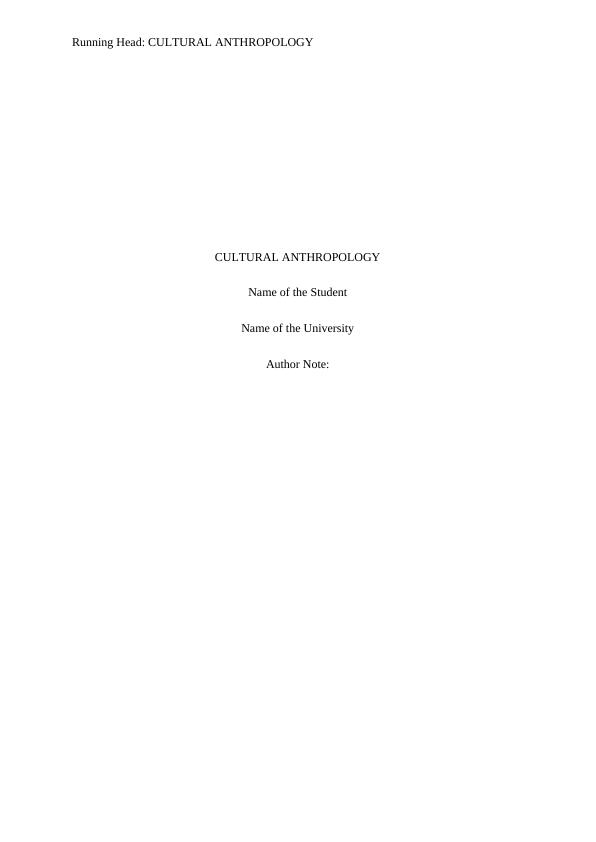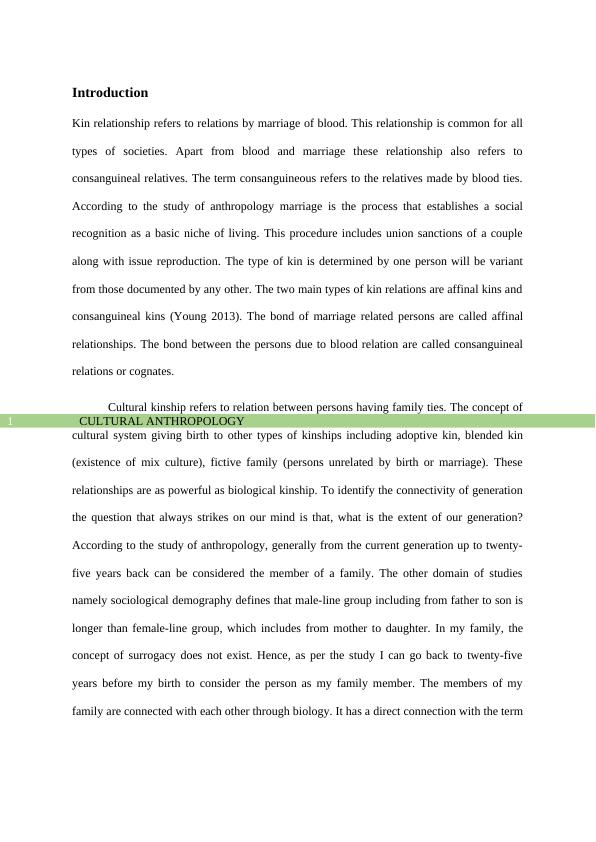Cultural Anthropology: Kinship and Roles of Elderly Individuals
Kinship refers to the relationships—found in all societies—that are based on blood or marriage, those people to whom we are related through birth or blood are our consanguineal relatives, those to whom we a. related through marriage are our affinal relatives. Each society has a well-understood system of defining relationships between these different types of relatives.
Added on 2022-10-02
About This Document
Cultural Anthropology: Kinship and Roles of Elderly Individuals
Kinship refers to the relationships—found in all societies—that are based on blood or marriage, those people to whom we are related through birth or blood are our consanguineal relatives, those to whom we a. related through marriage are our affinal relatives. Each society has a well-understood system of defining relationships between these different types of relatives.
Added on 2022-10-02
End of preview
Want to access all the pages? Upload your documents or become a member.



